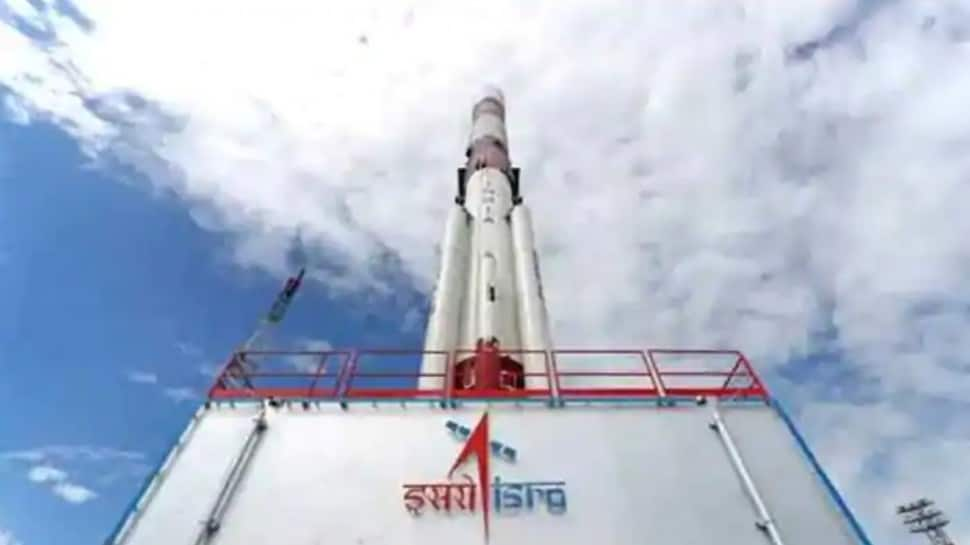ISRO’S 3 ‘FAILURES’ Learning Curve

With over 100 space missions involving foreign launchers and more than 75 rocket launches of its own, the Indian Space Research Organisation (ISRO) has made incremental strides in space exploration with satellites, rockets, and interplanetary and lunar missions since its inception in the early 1960s.
Besides setting various records for low Earth orbit (up to 2,000 km from Earth’s surface) satellite launches, ISRO has also sent spacecraft to Chandrama and planet Mangal with success.
A perusal of the global launch history shows the failure rate of 10 per cent. However out of the 200 or so launches ISRO has made, our failure rate is only 5 per cent. Also for the PSLV’s track record, we have had only two failures among 53 launches, and that’s one of the reasons many customers come to us for launches.
The PSLV, a trusty and hardy rocket launcher, can deliver payloads weighing up to 3,800 kg to low Earth orbit. However, in the past four to five years, the Indian space research agency has encountered a surprising number of failed missions, beginning with an unanticipated end to a 24-year success streak for the Polar Satellite Launch Vehicle (PSLV), which is considered the jewel on ISRO’s crown.
Described commonly as the “workhorse of ISRO”, the PSLV has a long record of delivering ride-sharing customer satellites (multiple customers launching their satellites piggybacking on each other) with sun-synchronous orbits (SSO), a kind of polar orbit where the satellite moves over both poles and passes overhead at the same time each day at a particular location.
After two failures in 1993 and 1997 with early test flights, the rocket — which had its first successful launch in October 1994 —enjoyed a highly successful streak of over 20 years. It has flown 53 times so far.
Then, in 2017, the PSLV-C39 mission encountered an unprecedented glitch when the payload fairing or nose cone — which protects the payloads inside as they ride through the atmosphere — of the rocket launcher failed to open up and separate from the rocket, causing the IRNSS-1H satellite to detach within the nose cone.
Investigations later revealed that of the two mechanisms responsible for ejecting the nose cone, the horizontal jettisoning system functioned as expected while the vertical system did not.
The PSLV isn’t the only launcher to have faced an issue in recent times.
Earlier this month, the launch of the EOS-03 satellite failed when the indigenous cryogenic upper stage of the GSLV Mk-II rocket failed to ignite and couldn’t place the satellite in the correct orbit. The Geosynchronous Satellite Launch Vehicle (GSLV) is a more powerful, three-stage launcher that was developed to launch payloads into a higher, geosynchronous or earth-synchronous orbit. Satellites in this orbit would be much higher and orbit at the same rate as Earth’s rotation, so they are visible perennially at the same spot in the sky at all times.
The indigenous cryogenic upper stage makes up the third and last stage of the rocket, which has to place payloads in a very high, inclined orbit and is powered by a cryogenic engine, where liquid oxygen and liquid hydrogen are stored at very cold temperatures. A GSLV upper stage failure also occurred in 2010 on the first test flight of the engine.
However, experts do not think that the failed missions are a cause for worry. “Over the past four years, ISRO has performed its PSLV and newer GSLV launches,” said Madhavan Nair, space scientist and former Chair of ISRO. “And only one could be considered a complete failure,” he added, referring to the PSLV nose cone failure.
“Earlier GSLV failures also occurred with the Russian engine,” he said, referring to GSLV Mk-I rockets that flew with a Russian-made cryogenic upper stage.
Apart from launchers, ISRO has also encountered issues with planetary and interplanetary missions.
The much-anticipated Moon mission Chandrayaan-2 was declared only a partial success after the orbiter entered into orbit successfully but the lander failed to stick the soft landing on the lunar surface, crashing into it.
Larger missions exploring newer territories typically first demonstrate their engineering capability to do so by sending technology demonstrator missions, which was also the case with Chandrayaan-1 (first orbiter to the moon) and Mangalyaan-1 (first orbiter to Mars). The Chandrayaan-2’s Vikram lander was also a technology demonstrator.
The Chandrayaan-1 orbiter became inoperable following nine months in orbit in 2008, bringing the mission to a premature end after ISRO lost communication with it. Meanwhile, Mangalyaan-1 continues to function in orbit around Mars with its basic scientific suite of instruments on board.
Highly-funded and experienced space agencies like NASA in the US, the European Union’s European Space Agency and Russia’s ROSCOSMOS have more sophisticated engineering and science missions, including interplanetary ones, than ISRO.
Over the past decade, these agencies have also carried out many more launches, involving private players in this enterprise as well. The latter also work on human spaceflight technologies.
China, too, has performed over 200 launches of its Long March series of rockets in the last decade, with two partial and seven complete failures.
In 2018 alone, it launched more orbital missions than any other country. The country sent the Chang’e series of spacecraft to the Moon, including one that landed on its far side. Despite a failed Mars mission, which was to fly on a Russian rocket that failed to launch in 2011, China managed to start the assembly of its Tiangong space station this year. It also sent an orbiter and a rover to Mars.
Japan also performed successful launches with its Epsilon, H-IIA, H-IIB classes of rockets, and successfully sent spacecraft to asteroids, deployed solar sails, and contributed instruments to a mission to Jupiter. Newer space players like Kuwait, UAE, and Israel, have also launched a handful of missions each.
Meanwhile, private players have been making developments in reusable rockets as well as space tourism and individual spaceflights. However, unlike some of the experienced agencies, ISRO has not encountered any human fatalities or injuries in space due to the space program.
The former Soviet Union and NASA have both lost members of crew in space during disasters, like that of the Soyuz 1 (1965) not opening its parachute after re-entry. Other disasters include those involving the Soyuz 11 (1971), where crew members died of decompression in space, and Columbia (2003), which had Indian-American Kalpana Chawla on-board.
ISRO’s larger interplanetary missions — including the upcoming human spaceflight mission Gaganyaan — are expected to be launched by the GSLV class of vehicles, which the space agency is still honing.
The unmanned missions of Gaganyaan were slated for launch in December 2020 and July 2021 and the first crewed mission was scheduled for December 2021. However, the Covid-19 pandemic delayed the schedule by a year.
As the agency expands to make the launcher functional, hurdles are expected to be encountered, explained Nair.




